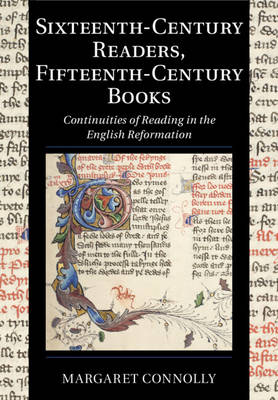
- Afhalen na 1 uur in een winkel met voorraad
- Gratis thuislevering in België vanaf € 30
- Ruim aanbod met 7 miljoen producten
- Afhalen na 1 uur in een winkel met voorraad
- Gratis thuislevering in België vanaf € 30
- Ruim aanbod met 7 miljoen producten
Zoeken
Sixteenth-Century Readers, Fifteenth-Century Books
Continuities of Reading in the English Reformation
Margaret Connolly
€ 43,45
+ 86 punten
Uitvoering
Omschrijving
This innovative study investigates the reception of medieval manuscripts over a long century, 1470-1585, spanning the reigns of Edward IV to Elizabeth I. Members of the Tudor gentry family who owned these manuscripts had properties in Willesden and professional affiliations in London. These men marked the leaves of their books with signs of use, allowing their engagement with the texts contained there to be reconstructed. Through detailed research, Margaret Connolly reveals the various uses of these old books: as a repository for family records; as a place to preserve other texts of a favourite or important nature; as a source of practical information for the household; and as a professional manual for the practising lawyer. Investigation of these family-owned books reveals an unexpectedly strong interest in works of the past, and the continuing intellectual and domestic importance of medieval manuscripts in an age of print.
Specificaties
Betrokkenen
- Auteur(s):
- Uitgeverij:
Inhoud
- Aantal bladzijden:
- 332
- Taal:
- Engels
- Reeks:
- Reeksnummer:
- nr. 16
Eigenschappen
- Productcode (EAN):
- 9781108445528
- Verschijningsdatum:
- 23/06/2022
- Uitvoering:
- Paperback
- Formaat:
- Trade paperback (VS)
- Afmetingen:
- 170 mm x 244 mm
- Gewicht:
- 530 g

Alleen bij Standaard Boekhandel
+ 86 punten op je klantenkaart van Standaard Boekhandel
Beoordelingen
We publiceren alleen reviews die voldoen aan de voorwaarden voor reviews. Bekijk onze voorwaarden voor reviews.











